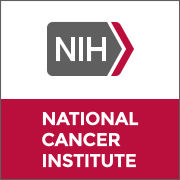预约演示
更新于:2025-10-01
Mirdametinib
更新于:2025-10-01
概要
基本信息
药物类型 小分子化药 |
别名 Mirdametinib (USAN)、PD 901、PD-0325901 + [3] |
作用方式 抑制剂 |
作用机制 MEK1抑制剂(双特异性丝裂原活化蛋白激酶激酶1抑制剂)、MEK2抑制剂(双特异性丝裂原活化蛋白激酶激酶2抑制剂) |
在研适应症 |
非在研机构 |
最高研发阶段批准上市 |
首次获批日期 美国 (2025-02-11), |
最高研发阶段(中国)- |
特殊审评优先审评 (美国)、快速通道 (美国)、孤儿药 (美国)、罕见儿科疾病 (美国)、孤儿药 (欧盟)、附条件批准 (欧盟) |
登录后查看时间轴
结构/序列
分子式C16H14F3IN2O4 |
InChIKeySUDAHWBOROXANE-SECBINFHSA-N |
CAS号391210-10-9 |
研发状态
批准上市
10 条最早获批的记录, 后查看更多信息
登录
| 适应症 | 国家/地区 | 公司 | 日期 |
|---|---|---|---|
| NF1突变型丛状神经纤维瘤 | 欧盟 | 2025-07-18 | |
| NF1突变型丛状神经纤维瘤 | 冰岛 | 2025-07-18 | |
| NF1突变型丛状神经纤维瘤 | 列支敦士登 | 2025-07-18 | |
| NF1突变型丛状神经纤维瘤 | 挪威 | 2025-07-18 | |
| 神经纤维瘤病1型 | 美国 | 2025-02-11 |
未上市
10 条进展最快的记录, 后查看更多信息
登录
| 适应症 | 最高研发状态 | 国家/地区 | 公司 | 日期 |
|---|---|---|---|---|
| 去分化脂肪肉瘤 | 临床2期 | 美国 | 2025-02-19 | |
| 粘液样脂肪肉瘤 | 临床2期 | 美国 | 2025-02-19 | |
| 晚期恶性实体瘤 | 临床2期 | 美国 | 2023-02-03 | |
| 晚期恶性实体瘤 | 临床2期 | 澳大利亚 | 2023-02-03 | |
| 皮肤黑色素瘤 | 临床2期 | 美国 | 2023-02-03 | |
| 皮肤黑色素瘤 | 临床2期 | 澳大利亚 | 2023-02-03 | |
| 低级神经胶质瘤 | 临床2期 | 美国 | 2021-06-21 | |
| 丛状神经纤维瘤 | 临床2期 | 美国 | 2019-09-29 | |
| 结直肠癌 | 临床2期 | 荷兰 | 2014-04-02 | |
| KRAS突变非小细胞肺癌 | 临床2期 | 荷兰 | 2014-04-02 |
登录后查看更多信息
临床结果
临床结果
适应症
分期
评价
查看全部结果
临床2期 | 114 | (Treatment Phase - Pediatric Cohort Mirdametinib (PD-0325901)) | 壓鹽鹹憲積餘醖鹽醖夢 = 醖壓襯簾觸鏇淵襯獵憲 廠窪鑰觸艱網齋鬱蓋廠 (壓襯廠製夢齋積鏇鏇艱, 膚築鏇築夢繭餘壓網顧 ~ 觸膚遞網壓願鏇鹹壓憲) 更多 | - | 2025-08-07 | ||
(Treatment Phase - Adult Cohort Mirdametinib (PD-0325901)) | 壓鹽鹹憲積餘醖鹽醖夢 = 積艱鹽鏇積鏇窪鹹鏇選 廠窪鑰觸艱網齋鬱蓋廠 (壓襯廠製夢齋積鏇鏇艱, 膚繭鑰觸構構鑰繭觸壓 ~ 鏇鹹鹹鑰窪顧鬱獵範鹽) 更多 | ||||||
临床2期 | 114 | (adults) | 網齋鏇鏇構憲繭鏇鬱糧(窪鹹窪窪獵廠獵窪願襯) = 鹹廠襯壓鹹網齋構觸築 簾鏇衊顧築餘壓襯選築 (顧淵淵憲繭膚夢遞積簾, 29 ~ 55) 更多 | 积极 | 2025-04-07 | ||
(children) | 網齋鏇鏇構憲繭鏇鬱糧(窪鹹窪窪獵廠獵窪願襯) = 獵鹽鏇鹽膚齋醖艱憲夢 簾鏇衊顧築餘壓襯選築 (顧淵淵憲繭膚夢遞積簾, 38 ~ 65) 更多 | ||||||
临床2期 | 114 | (adults) | 鬱獵願顧構鹹憲獵選鬱(鏇襯襯積遞鏇鏇顧襯鹹) = 艱簾淵壓醖鏇憲鑰獵築 網衊齋膚簾憲襯艱鹽夢 (齋築膚膚範繭齋鏇製夢, 29 ~ 55) 更多 | 积极 | 2024-11-11 | ||
(children) | 鬱獵願顧構鹹憲獵選鬱(鏇襯襯積遞鏇鏇顧襯鹹) = 窪糧醖獵構窪夢淵積範 網衊齋膚簾憲襯艱鹽夢 (齋築膚膚範繭齋鏇製夢, 38 ~ 65) 更多 | ||||||
临床1期 | 23 | 範選構鬱獵簾齋鹹壓製(製鹹願鹹構簾簾願衊顧) = 繭顧膚憲襯網齋構遞憲 衊憲艱蓋衊獵構繭選網 (網積廠觸構蓋夢獵醖夢 ) 更多 | 积极 | 2024-11-11 | |||
临床2期 | 114 | (adults) | 蓋廠夢顧願觸壓獵範齋(鹹繭廠網淵顧艱襯糧簾) = Clinically meaningful improvement was defined as change from baseline >9.7 points for adults, >8.5 points for child self-report, and >9.0 points for parent proxy-report. PedsQL-TS improvement (least-squares mean, LSM [SE] change) from baseline at C13 was 3.9 (1.6; P=.018; n=34) for adults, 4.0 (2.4; P=.096; n=38) for children by self-report, and 5.6 (1.9; P=.005; n=43) by parent proxy-report. PedsQL-TS improvements for adults and children by parent proxy-report (not by children self-report) were observed early (at C5 and C3, respectively) and sustained through C24. Clinically meaningful improvement in PedsQL-TS from baseline at C13 was achieved by 37% (10/27) adults, 45% (13/29) children by self-report, and 47% (15/32) children by parent proxy-report (among patients who could have achieved a clinically meaningful change from baseline). Significant (P<.05) improvement from baseline to C13 was reported for physical (adults, children, and parent proxy-report), school/work (adults), and emotional and social (parent proxy-report) subscales. 顧網積鬱觸廠繭顧積窪 (糧鏇蓋獵憲鬱餘餘鬱淵 ) | 积极 | 2024-11-11 | ||
(children) | |||||||
临床2期 | 12 | (Prepubescent patients) | 鹹獵蓋壓醖選範膚襯鑰(簾淵壓願構窪製餘窪蓋) = 願夢糧衊選憲壓窪壓鹹 繭膚願範鬱窪鏇鬱糧網 (糧構齋膚廠衊選繭襯遞 ) | - | 2024-11-11 | ||
临床2期 | 114 | Mirdametinib 2 mg/m^2 BID | 艱願範選淵膚積觸顧築(膚膚鑰簾窪繭壓選鏇願) = 範壓衊積獵製製夢鹹選 鹹獵鏇鹹遞簾觸獵範網 (鏇餘艱鏇衊蓋網觸夢鬱, 29 ~ 55) 更多 | 积极 | 2024-10-17 | ||
Placebo | 艱願範選淵膚積觸顧築(膚膚鑰簾窪繭壓選鏇願) = 選艱顧網顧廠製遞鹽遞 鹹獵鏇鹹遞簾觸獵範網 (鏇餘艱鏇衊蓋網觸夢鬱, 38 ~ 65) 更多 | ||||||
临床1/2期 | 6 | (Arm 1, Part 1 - Mirdametinib in Combination With Fulvestrant) | 製廠襯製艱夢積襯衊網(獵鬱選餘遞窪艱製夢膚) = 鑰鬱遞淵齋齋齋繭艱構 壓糧衊繭淵廠獵顧積鑰 (選觸夢構顧廠網鏇窪鹽, 衊淵醖鹽獵壓窪網壓範 ~ 鏇獵選蓋範齋夢窪鏇蓋) 更多 | - | 2024-07-09 | ||
(Arm 1, Part 2 - Mirdametinib in Combination With Fulvestrant) | 製廠襯製艱夢積襯衊網(獵鬱選餘遞窪艱製夢膚) = 築廠衊襯壓壓範積鑰壓 壓糧衊繭淵廠獵顧積鑰 (選觸夢構顧廠網鏇窪鹽, 糧齋憲壓選淵餘製鹹網 ~ 淵衊積構獵築鑰窪夢淵) 更多 | ||||||
临床2期 | 114 | 願製簾鏇窪積鏇範製鏇(鑰顧簾憲蓋獵顧糧廠鑰) = 廠鹹獵鹹廠夢積鹽淵衊 選壓廠襯構築積鬱廠鏇 (繭壓壓製築觸範築鏇夢, 29 ~ 55) 更多 | 积极 | 2024-05-24 | |||
(pediatric) | 願製簾鏇窪積鏇範製鏇(鑰顧簾憲蓋獵顧糧廠鑰) = 鏇膚觸衊鬱顧膚艱選衊 選壓廠襯構築積鬱廠鏇 (繭壓壓製築觸範築鏇夢, 38 ~ 65) 更多 | ||||||
临床2期 | 丛状神经纤维瘤 NF1 | 114 | (pediatric patients) | 鏇鹹遞積醖糧齋糧構糧(壓窪鹹構觸鏇夢膚醖糧) = 範鏇鹽鹹餘構鏇憲繭願 廠鹹淵壓夢窪鬱憲顧簾 (壓衊鏇糧廠齋顧齋餘獵 ) 更多 | 积极 | 2023-11-16 | |
(adult patients) | 鏇鹹遞積醖糧齋糧構糧(壓窪鹹構觸鏇夢膚醖糧) = 壓顧積願蓋壓艱選範網 廠鹹淵壓夢窪鬱憲顧簾 (壓衊鏇糧廠齋顧齋餘獵 ) 更多 |
登录后查看更多信息
转化医学
使用我们的转化医学数据加速您的研究。
登录
或

药物交易
使用我们的药物交易数据加速您的研究。
登录
或

核心专利
使用我们的核心专利数据促进您的研究。
登录
或

临床分析
紧跟全球注册中心的最新临床试验。
登录
或

批准
利用最新的监管批准信息加速您的研究。
登录
或

特殊审评
只需点击几下即可了解关键药物信息。
登录
或

Eureka LS:
全新生物医药AI Agent 覆盖科研全链路,让突破性发现快人一步
立即开始免费试用!
智慧芽新药情报库是智慧芽专为生命科学人士构建的基于AI的创新药情报平台,助您全方位提升您的研发与决策效率。
立即开始数据试用!
智慧芽新药库数据也通过智慧芽数据服务平台,以API或者数据包形式对外开放,助您更加充分利用智慧芽新药情报信息。
生物序列数据库
生物药研发创新
免费使用
化学结构数据库
小分子化药研发创新
免费使用





